In tech, change can be a cliché. We’ve heard “game-changer” thrown around so many times it’s become background noise. But some changes earn the melodrama. Agentic AI, and by extension agentic commerce, is one of them.
AI agents are drastically reshaping the customer journey. Instead of browsing and comparing, customers can delegate discovery, evaluation, and purchase to AI agents. The agent finds a product, vets it, and offers it for purchase. This may be the largest shift in buying behavior since mobile e-commerce.
ChatGPT’s recent launch of Instant Checkout makes this concrete: users can now go from research to completed transaction in a single conversational flow, without ever leaving the chat interface.
The challenge is that this shift is largely untracked. AI providers publish research, but nothing equivalent to Search Console or GA for merchant-level analytics. And most third-party web analytics can’t distinguish agent traffic from human traffic, let alone manage agent behavior.
HUMAN verifies more than 20 trillion digital interactions each week, giving us unique visibility into this shift as it happens. Over the past year, we’ve pioneered methods for detecting and attributing AI agent traffic, released open-source infrastructure for cryptographically verified agent identity, and built AgenticTrust, the first solution purpose-built to provide visibility and governance over AI agent activity.
We see which agents are visiting sites and applications, the paths they travel, and the actions they take. We can also see how quickly agentic traffic is accelerating: in the first eight months of 2025, agentic traffic grew by more than 1,300 percent, driven largely by the first wave of commercial agents and agentic browsers such as ChatGPT Agent and Perplexity Comet.
In this blog, we’ll share some of our observations and what they tell us about where agentic commerce is headed.
Note: The telemetry presented in this post describes trends across HUMAN-verified interactions, not an absolute representation of all AI agent activity or the market share of all agents.
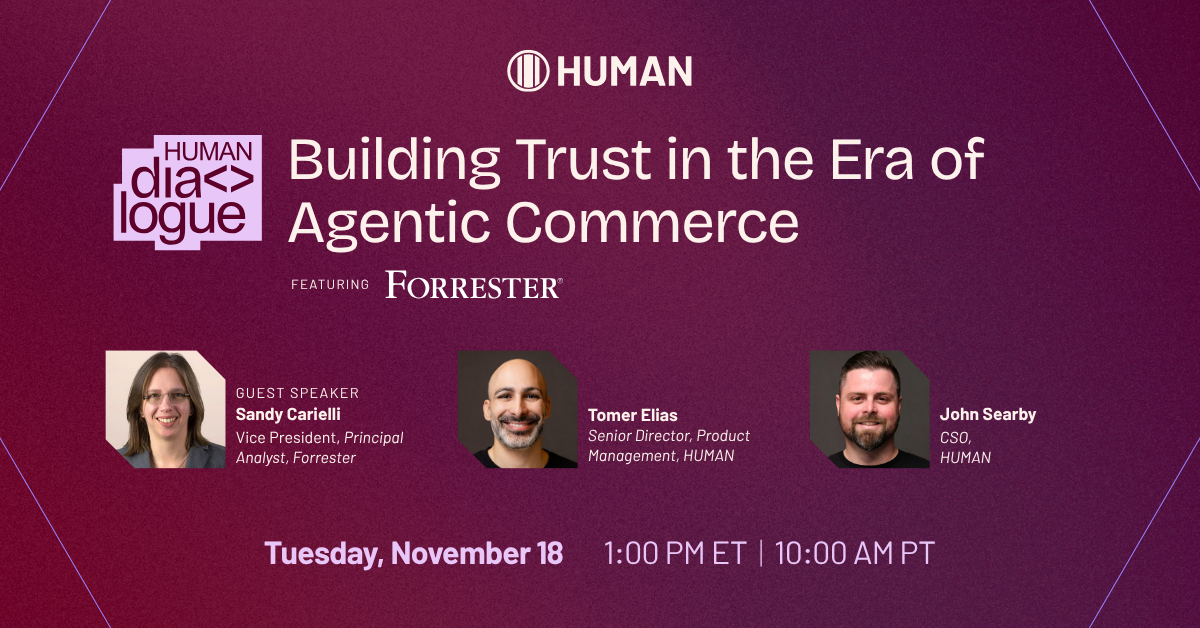
What We Mean When We Talk About AI Agents
The data below focuses on autonomous AI agents, which are different from the LLM-initiated crawlers and bots. For a detailed breakdown on the differences between AI agents and LLM crawlers and scrapers, see our complete guide to AI traffic types.
It’s also worth noting how those more established bots fit into the AI commerce landscape. When users research products in ChatGPT or Gemini, these systems dispatch RAG scrapers to fetch real-time pricing, availability, and reviews. Users then make purchase decisions based on that research and complete transactions manually. RAG scrapers influence what gets considered, but humans still conduct the purchase.
Agents are different. They don’t just retrieve information; they act on it. They browse sites, compare options, fill forms, and transact autonomously, albeit with user guardrails.
The Current State of Agentic Traffic
Agent traffic currently makes up a small fraction of overall AI-driven activity. HUMAN processes trillions of interactions weekly, but agentic traffic currently measures in the millions of requests per month. This traffic is dwarfed by traditional scrapers and crawlers (including AI scrapers such as ChatGPT-User), which operate at far higher volumes. This can make agents easy to overlook in aggregate traffic analysis, but their trajectory and economic impact make them critical to track.
From January to August 2025, HUMAN tracked a 1300% increase in agentic traffic, up to nearly 4.5 million requests per month.
In early 2025, this traffic was primarily open-source agents used for testing or as developer tools, but as the year went on, large commercially released agents came to dominate. Agentic traffic grew sharply from Q2 to Q3, largely due to the July releases of ChatGPT Agent and Perplexity Comet, and has continued to grow quickly. Total AI agent traffic increased by 131.15% month over month from August to September.
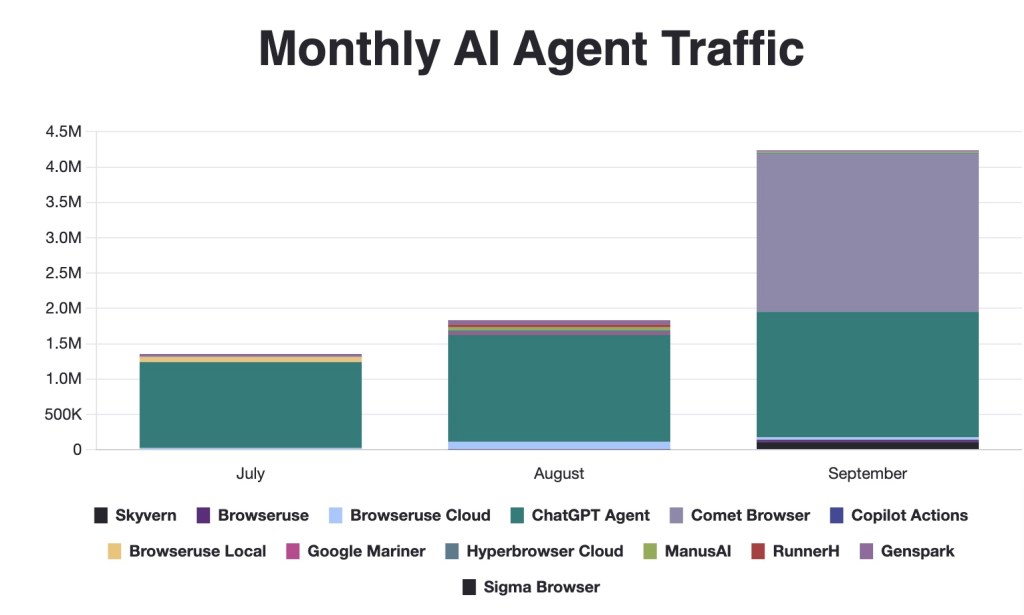
Your Guide to Safely Adopting Agentic Commerce
See how AI agents are changing discovery and purchase, explore the emerging trust frameworks, and learn what readiness looks like for the agent-driven economy.
Traffic Data Shows Early Tumult in the Agent Wars
The agent landscape is also evolving rapidly. In July, ChatGPT Agent represented 90% of agent-driven activity following its release. By August, it still made up the majority of agent traffic at 82.5%.
But by September, Perplexity’s Comet Browser had overtaken ChatGPT Agent as the top source of agentic activity, generating 52.5% of traffic compared to ChatGPT Agent’s 42%.
This shift reflects how aggressively companies are pushing adoption. Perplexity distributed free Comet accounts, accelerating initial usage. On October 2, Perplexity made Comet generally available.
Meanwhile, OpenAI’s launch of Instant Checkout in late September introduces another variable. As checkout capabilities expand across agents, we expect to see corresponding shifts in traffic patterns and conversion behavior.
The competitive landscape is also about to intensify. Anthropic’s Claude for Chrome and Google’s Gemini for Chrome are both positioned to enter the agentic browser market, bringing the weight of established AI platforms directly into the browser. When these launch, we expect another significant redistribution of agent traffic.
What Agents are Doing: Shopping, But Not Buying (Yet)
By examining the page paths and interactions of AI agents, we can see that the majority of agentic interactions signal commercial intent. From January to August 2025, approximately 87% of all pages browsed by agents were related to products.
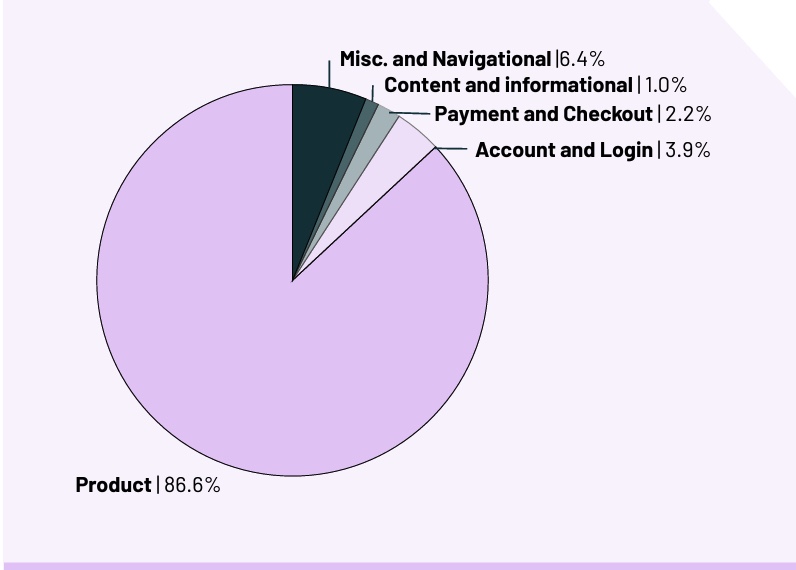
This has immediate implications for blocking strategies. Most agents act on behalf of real users. If they can’t access your product pages, they move to a competitor. In other words, every blocked request risks a lost sale.
However, our data indicates that the majority of these interactions are related to product research and recommendations, not full transactions. Just 2.2% of Agents interacted with shopping carts, checkout, and payment funnels.
This aligns with current adoption trends in agentic commerce, where users primarily utilize agents for product research and comparison. Most commercially available agents, however, require human interaction to complete checkout flows. But adoption is accelerating quickly, and the next two phases are already on the horizon: autonomous purchasing and agent-to-agent negotiation.
Approximately 3.9% of agent interactions involved account-related pages, such as login screens and account settings. Most were login attempts, either user-prompted or triggered by workflows the agent was trying to complete. A small fraction (0.10%) involved agents attempting to register new accounts.
These low percentages for both checkout and account activity reflect current capability constraints, not lack of intent. Recent infrastructure developments signal this is about to change. ChatGPT’s launch of Instant Checkout enables end-to-end transactions without leaving the chat interface, while Perplexity Comet now integrates with 1Password for secure credential management during autonomous logins. As password managers and agents establish secure handoff protocols, and as native checkout capabilities expand, the friction preventing agents from completing authenticated actions—logins, account updates, purchases—will diminish rapidly.
Consumer Adoption is Accelerating
As the first round of AI agents and browsers becomes publicly available, consumer adoption is shifting from curiosity to habit. Recent research from Adobe found that 38% of consumers have used GenAI for shopping. Among those who have tried agentic shopping, 85% said it improved the experience, and 73% said it is now their primary source of research.
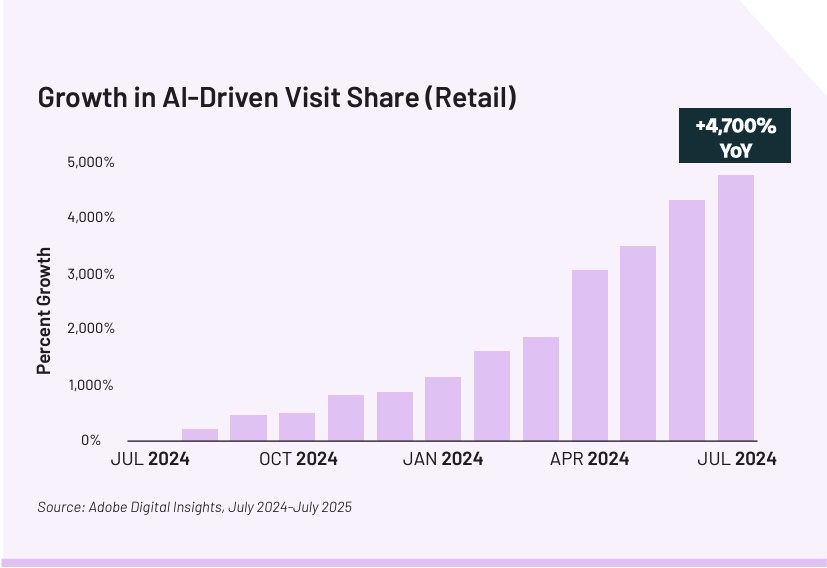
The impact on conversion is significant. When an AI assistant pre-qualifies a product and provides it as a direct answer, customers arrive with higher intent. A Semrush search study found that users who arrive via AI-generated answers convert 4.4× better than those coming from traditional search results.
Analysts are also bullish: Gartner® predicts that “[by] 2028, AI agent machine customers will replace 20% of the interactions at human-readable digital storefronts, and that “by 2035, 80% of internet traffic could be driven by AI Agents.”1
Turning Visibility into Action: Enabling Agentic Commerce with HUMAN
The data tells a clear story: agentic traffic is growing exponentially, agents are focused on commercial activity, and market dynamics are shifting every few weeks. But raw data alone doesn’t prepare you for what’s coming.
The merchants who will thrive in agentic commerce aren’t just tracking these trends—they’re building the infrastructure to see agent behavior in real-time and govern it dynamically. That means knowing which agents are visiting your site, understanding their intent across the customer journey, and having granular controls over what they’re allowed to do.
That’s what AgenticTrust delivers.
See. Govern. Grow.
See consumer agents in action. Get session-level visibility into which AI agents are browsing your catalog, attempting logins, or reaching checkout. Understand their behavior patterns, evaluate trustworthiness, and identify whether activity was user-prompted or autonomous.

Make AI agents play by your rules. Apply fine-grained policies that govern what agents can and cannot do. Allow trusted agents like ChatGPT Agent and Perplexity Comet to browse and transact. Block spoofed or malicious agents before they can act. Set different permissions for browsing versus checkout versus account modifications.
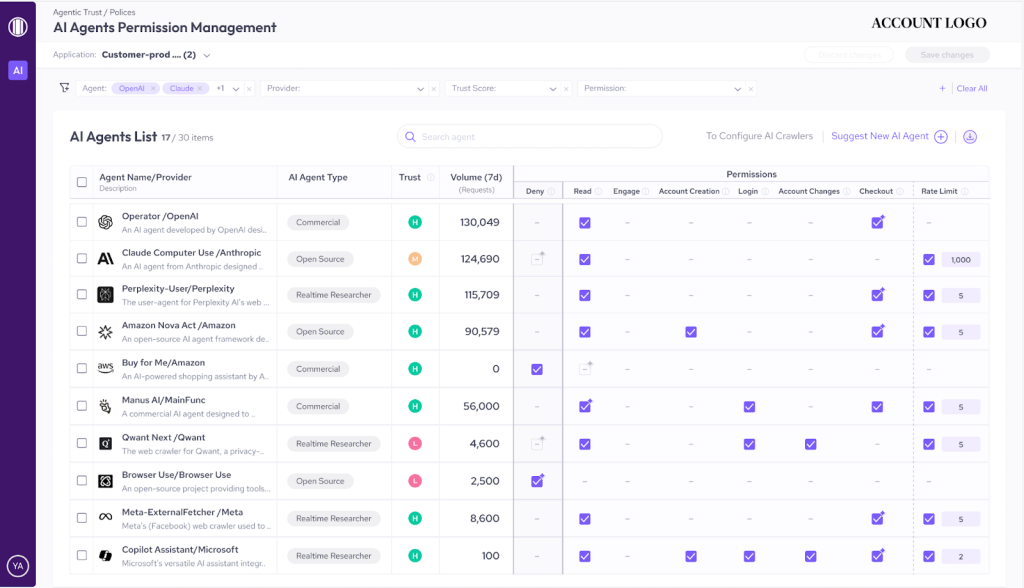
Deploy a trust layer for agentic commerce. Verify agent identity cryptographically, prevent fraud and abuse, and protect high-impact actions like login and payment. Turn agentic commerce into a driver of revenue growth, not risk.
Built on Proven Capabilities
AgenticTrust extends HUMAN Sightline Cyberfraud Defense—the platform already protecting accounts, transactions, and promotional value at internet scale for the world’s largest digital businesses. You get unified visibility and control across humans, bots, and AI agents through a single trust framework, backed by the SATORI Threat Intelligence team’s continuous research into emerging agent behaviors and attack vectors.
The Agents Are Already Here
As this data shows, agentic traffic isn’t a future scenario; it’s happening now and accelerating fast. The question isn’t whether agents will become a significant commerce channel. The question is whether you’ll have visibility and control when they do.
Request a demo to see which agents are in your traffic today and get the governance controls to manage them tomorrow.
1Gartner, Gartner Futures Lab: The Future of Identity, 7 April 2025
GARTNER is a registered trademark and service mark of Gartner, Inc. and/or its affiliates in the
U.S. and internationally and is used herein with permission. All rights reserved.
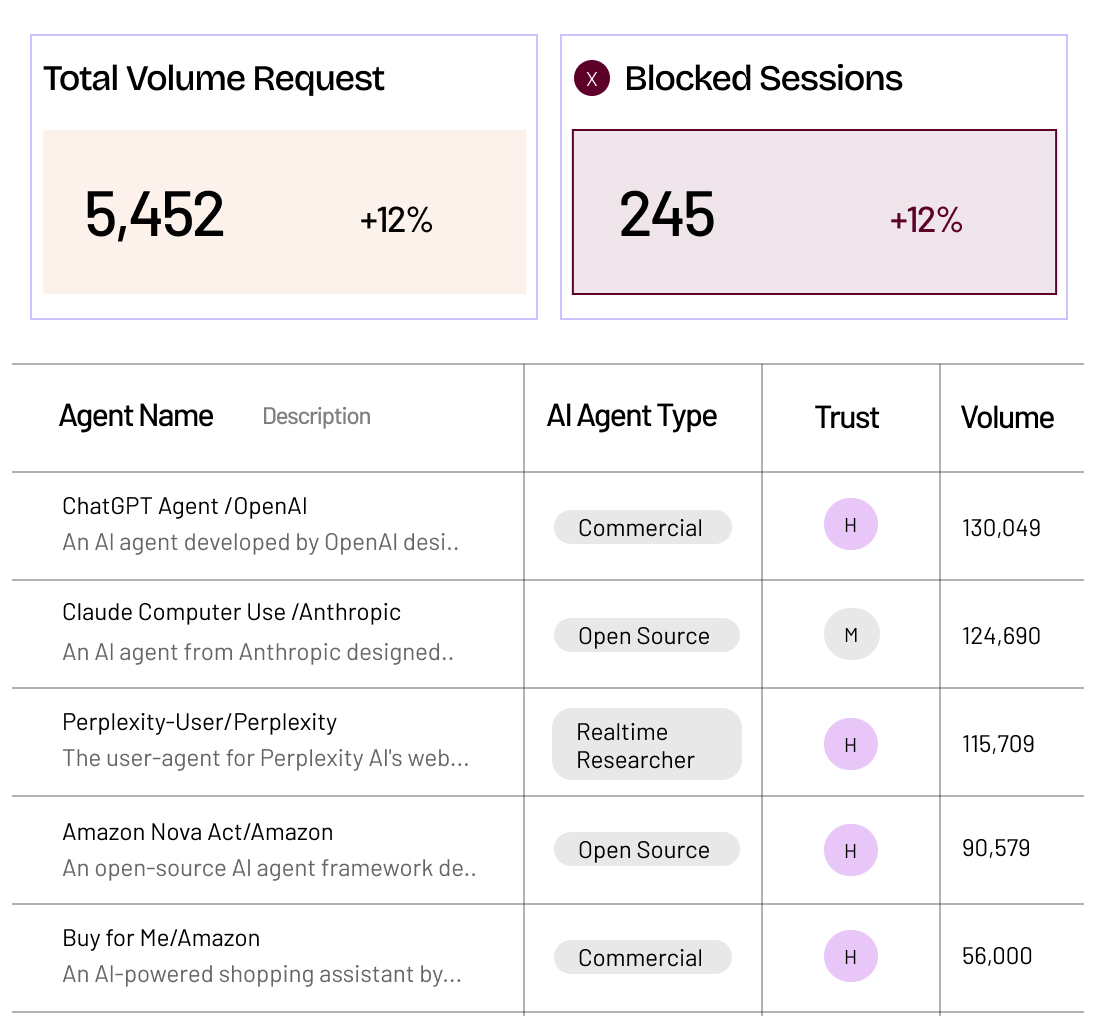
Visibility and Control Over AI Agents
AgenticTrust surfaces, classifies, and governs AI agents with adaptive trust. Allow good automation, stop abuse, and protect your business without sacrificing growth.



